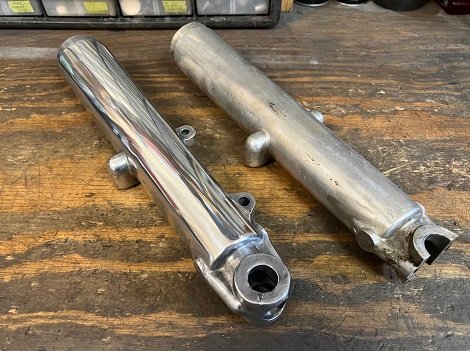Harley Forks Identification
Article by Mark Trotta
Looking to swap the front end on your old Harley? Fork tubes, sliders, and trees were not only produced by the Motor Company, they're offered in the aftermarket as well. There are countless different tree/fork combinations from dozens of companies, ranging from stock assemblies to complete custom fabrications.
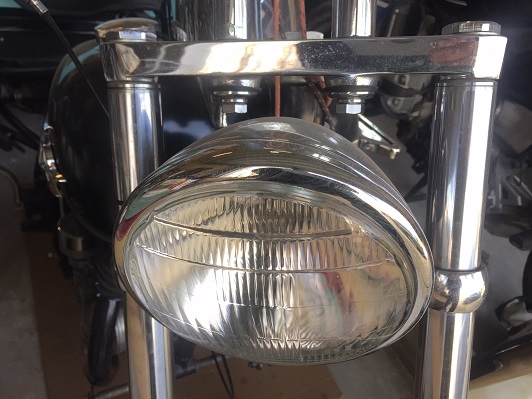
Mostly chrome units are offered in the aftermarket. Some triple tree sets use a lower tree with the tabs removed for custom applications. So it's important to know what you have before starting to swap out parts.
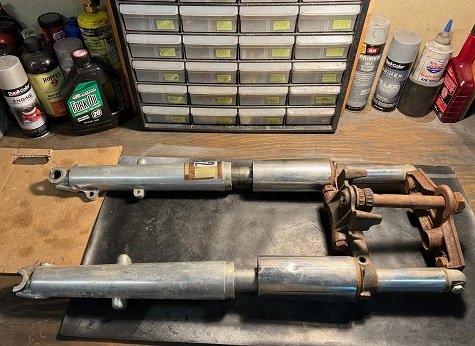
What is it from and what does it fit?
*************************
First Harley Hydraulic Forks
In 1949, hydraulic fork tubes replaced the springer front end on Harley Panheads, nearly doubling the amount of wheel travel.
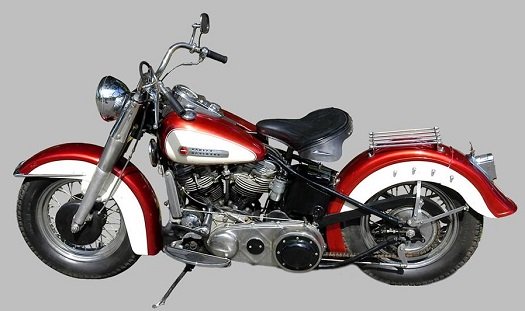
Main advantages of telescopic forks over earlier springer front ends were that they were cheaper to manufacture, lighter in weight, and needed less maintenance.
First-year Hydra-Glide forks are unique--it was the only year that the lower legs were sand-cast and painted black (not polished).
Another unique feature of 1949 forks were that the tops were not vented or chrome-plated like later forks. Instead, there was a nipple-like bump.
*************************
Hydra-Glide Forks Identification
1949 through 1959 Hydra-Glide forks had a steel panel behind the headlamp with stand-alone lamp.
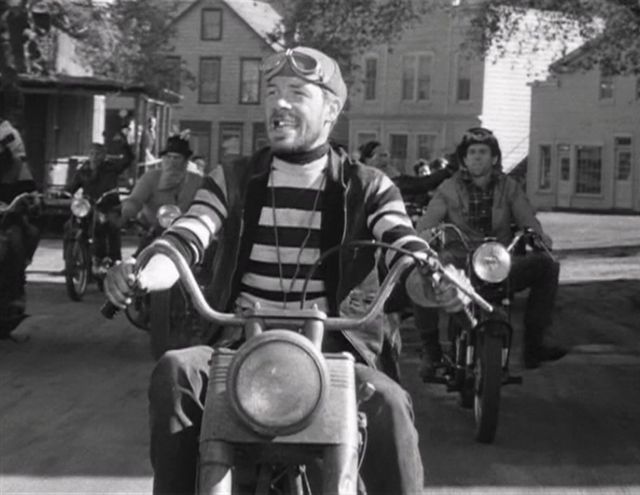
Early Panhead with stand-alone headlamp
From 1960 up, headlamps were mounted inside an aluminum housing.
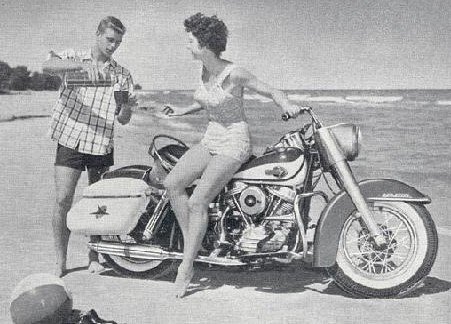
1960 Panhead with enclosed headlamp
*************************
Upper Steel Panels
There were several styles of upper fork covers, which helps determine what year it is correct for.
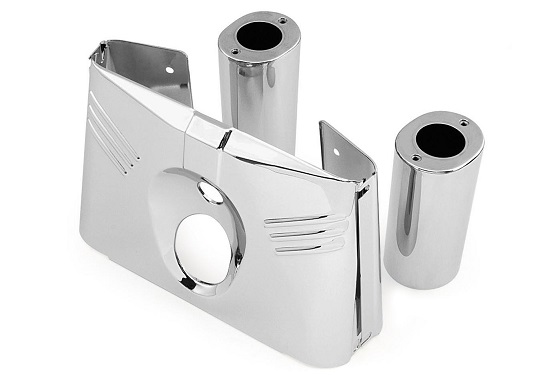
1949 - no writing appears on cover, and there are four straight notches on either side. Made from either stainless steel or plain steel.
1950 through 1954 - Upper covers have "Hydra-Glide" in script on upper left, and there are four straight notches on either side. Made from stainless steel or plain steel.
1955 up - Upper covers have three angled notches on either side, can be either stainless steel or plain steel.
*************************
Harley Cowbells
Upper fork slider covers resemble cowbells, and that's what Harley owners have been calling them for decades. They are made from stainless steel and usually last a long time.
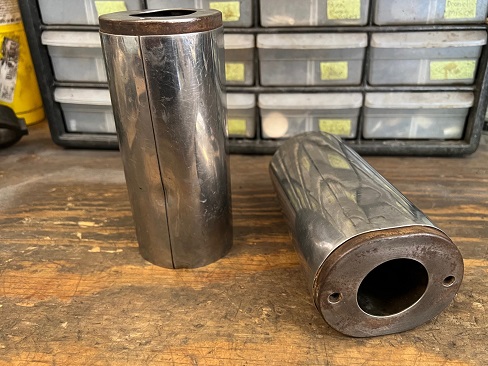
Early factory cowbells are part 45964-49 and fitted to 1949 through 1977 Panheads and Shovelheads as well as 1958 through 1976 Servi-cars.
Stock length is 6-5/8", but they are available in the aftermarket in +2" and +4" longer versions.
NOTE: Harley Softail fork covers are similar but carry a different part number 45964-86.
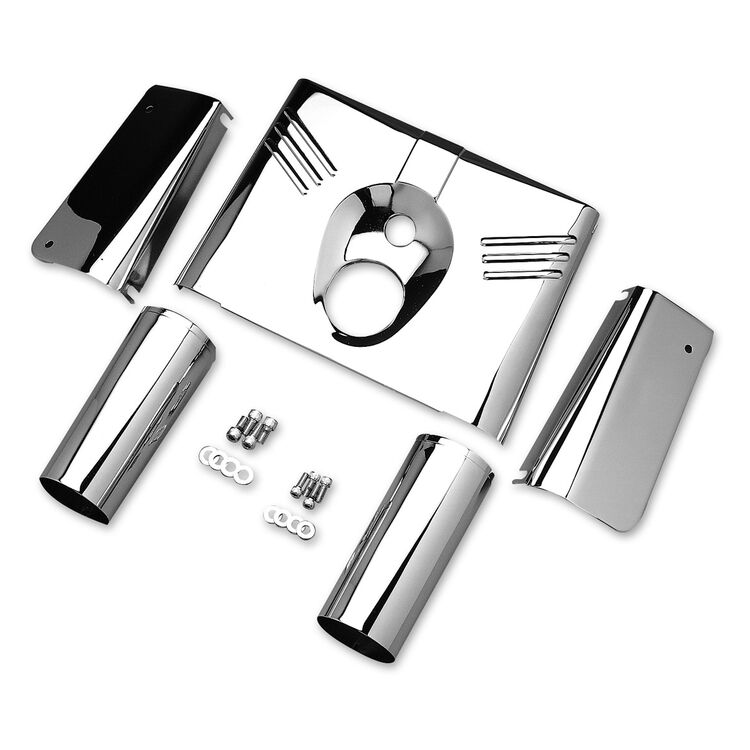
*************************
Three Basic Styles of Hydra-Glide Forks:
Non-Adjustable and Non-Raked (found on Big Twins)
Adjustable Big Twin (for use with sidecars)
Fixed Rate (Servi-cars 1958-up)
The adjustable Big Twin for use with sidecars had two positions, standard for solo, and slightly raked out for sidecar use.
The 1950 model year had an adjustable with two short bolts and a special knobbed washer. 1951 and later adjustable have one long bolt which passes through the triple tree.
For 1958, the neck stem length and inner diameter of the Servi-Car frame were increased to accept Panhead front forks, and would stay in use on all subsequent trikes until production's end in 1973.
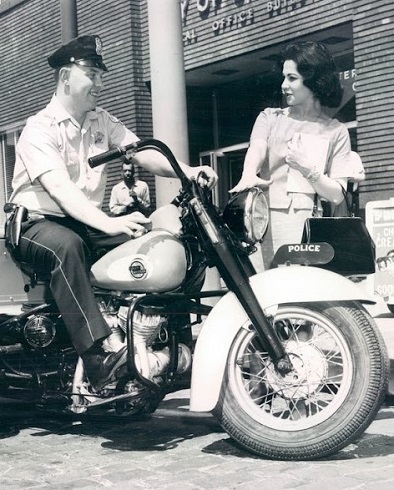
All 1958 through 1973 Servi-car models were equipped with hydraulic forks and fixed-rate triple trees. These are similar to the two-position adjustable, but with only one position, which is the raked.
The movable lower tree bracket does not have slots (like the Big Twin adjustable) only holes for the long bolt to pass through it.
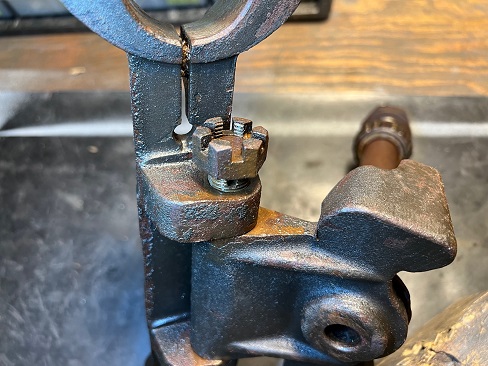
Servi-car 'Fixed Rate' lower triple tree
***********************
Front Drum Brake
Drum brakes were fitted to the left side of all 1949 to 1968 Harley Big-Twin and Servi-car forks.
From 1969 through 1971, the drum mounted on the right side.
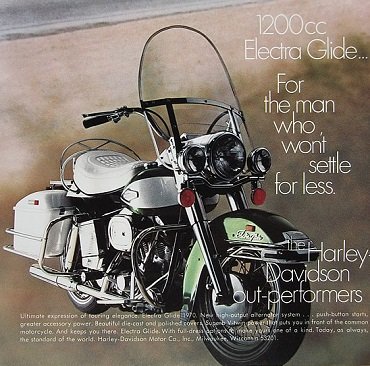
Pictured above: 1970 Electra-Glide with front drum on right side.
*************************
1977-up Shovelhead Forks
The original Hydra-Glide design carried on into the Shovelhead years. Somewhere around 1977, H-D switched to Showa (Japanese) fork tubes on FL models. These are similar in appearance to earlier forks, and are often swapped for one another, but have no interchangeable parts. Showa forks did not come from the factory with replaceable bushings, although some aftermarket suppliers now offer them.
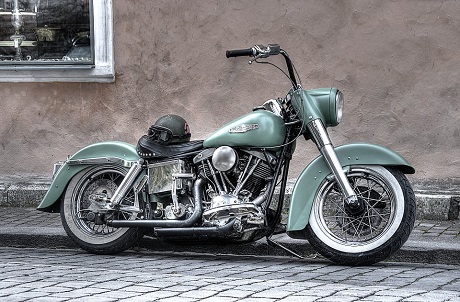
Fork Dimensions
From 1949-up, Harley FL front fork tubes measured 1-5/8" in diameter. Somewhere in the eighties, the Motor Company began advertising tube diameter in millimeters instead of inches. Since then, 1-5/8" forks are referred to as 41mm forks.
The spacing dimension for Hydra-Glide, Duo-Glide, Electra-Glide, and later Wide Glide forks is 9.875" between fork tube centers. Early FL trees and Wide Glide trees are both called Wide Glide trees. The difference is, factory Wide Glide triple trees do not have a spot to attach the cowbells and upper cover, the FL lower tree does.
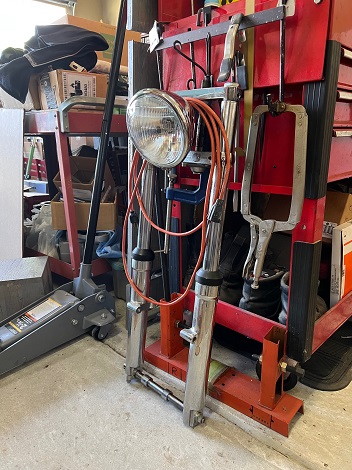
By comparison, a 'Mid-Glide' is 8.875" between fork tube centers.
A 'Narrow-Glide' is 7.00" between fork tube centers.
*************************
K-Model and Early Sportster
From 1952 Harley K models to 1972 Sportster models, fork tubes were 33.4mm diameter (1-5/16"). The sliders were steel and fitted with drum brakes only.
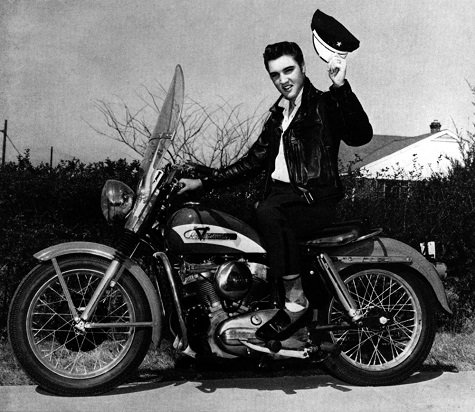
33.4mm forks were good enough for Elvis
The large headlight used on XL and XLH models in 1957 and 1958 was basically a pre-1960 Panhead unit with an oil and generator light added in the bucket.
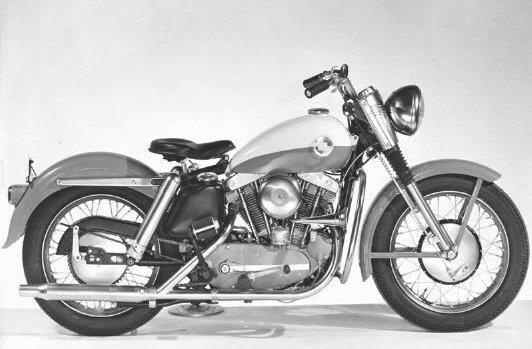
Early Sportster Front Forks
There are four main variations of the 33.4mm front end:
- 1952-1967 - fender wings, no taper on sliders, no seals.
- 1968-1969 - fender wings, taper on the sliders, have a bolt instead of nut to hold the slider in place.
- 1970 - same as 1968-1969 but with no fender wings.
- 1971-1972 - rubber seals, have fork boots instead of gators.
Note that early Sportster and K Model front ends do not have the taper by the wheel as do 1968 through 1972 front ends. With the exception of possibly the springs, parts are not interchangeable with these two front ends.
************************
Harley Super Glide and FX Models
Designed by Willie G Davidson, grandson of company co-founder William A Davidson, the 1971 Super-Glide combined the lighter, thinner front end of a Sportster with a Big-Twin frame and motor.
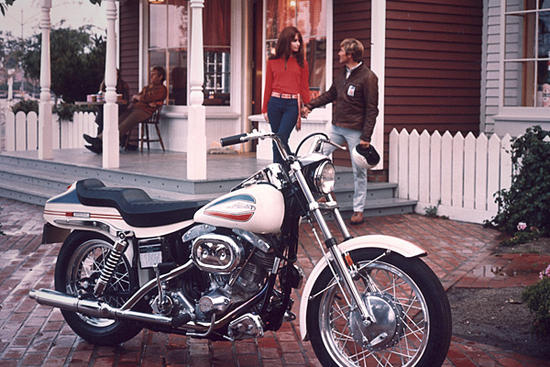
At 560 pounds, the first Super Glide was 150 pounds lighter than an FL model, and 60 pounds heavier than a Sportster.
1971 and 1972 forks have removable (screw off) collars on the top of the fork slider.
************************
35mm Forks
Harley Sportster and FX models shared the same forks for many years. A front disc brake replaced the drum brake in 1973, and fork tube diameters were increased to 35mm on Sportsters and FX Big-Twins. These 35mm forks were first manufactured by Kayaba, then by Showa (both Japanese companies).
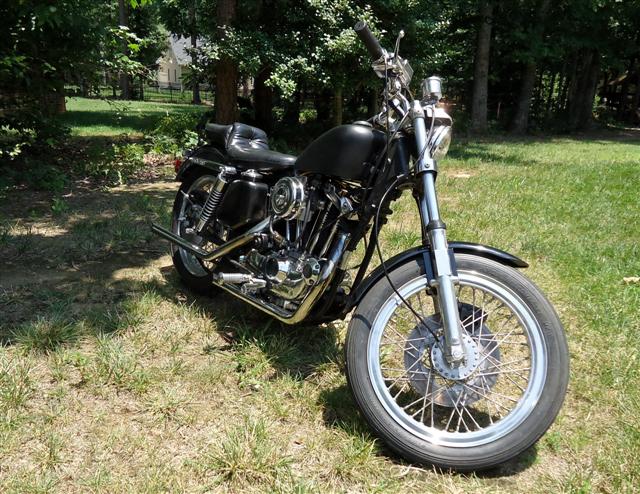
Early 35mm forks had a "pie-slice" brake caliper and cloverleaf rotor, later to be fitted with dual-disc calipers.
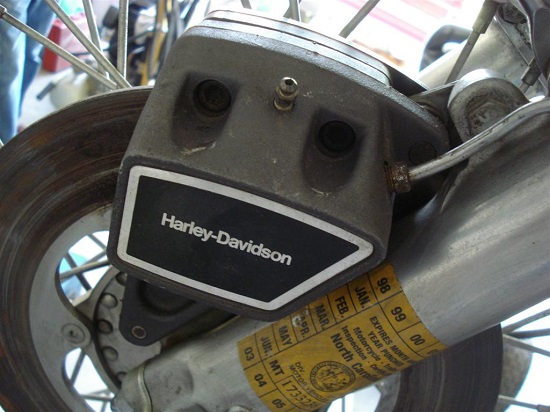
Read: 1974-1977 Harley Caliper Rebuild
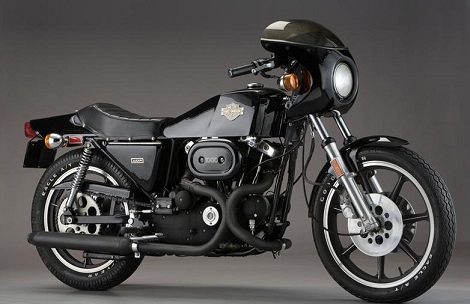
Read: Rebuild Harley Dual Disc Calipers
************************
Harley Wide Glide
Originally offered on the FXWG in 1980, Harley Wide Glide forks were also fitted to 1980-1983 FWDG Dyna models, and several Softail models from 1993-2003.
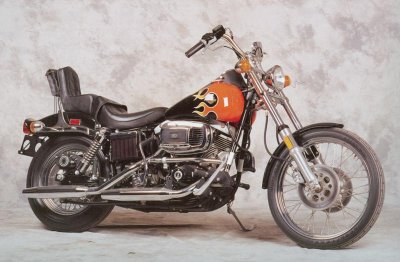
Early Wide Glide models had dual disc front brakes. Later models had a single-disc front brake.

Spacing dimension is 9.875" between fork tube centers.
Since all Harley Big-Twin frames from 1949-up have the same 1.00" neck diameter, Wide Glide conversions are a popular front end swap.
***********************
39mm Forks
Starting in 1987, 39mm "Narrow Glide" forks were fitted to Evo Sportsters, and some Big-Twin models (such as FXR models). They were manufactured by Showa, the same Japanese company who supplied the earlier 35mm forks.
***********************
What Weight Fork Oil Is Best?
For average temperature conditions, 20W fork oil is suitable. If you ride during winter months, 10W fork oil is better for colder conditions. For very hot weather conditions 30W is recommended. It's always best to check the factory service manual for your year, make, and model motorcycle.
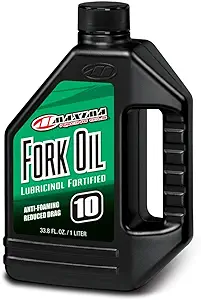
Shop: Fork Oil
Factory manuals state that fork oil should be changed every other riding season, but it also depends on how much (or how little) you ride.
***********************
Related Articles:
Harley-Davidson Shovelhead
Harley-Davidson Panhead
Sportster History
Harley Servi-Car
Girder Front Forks Overview
